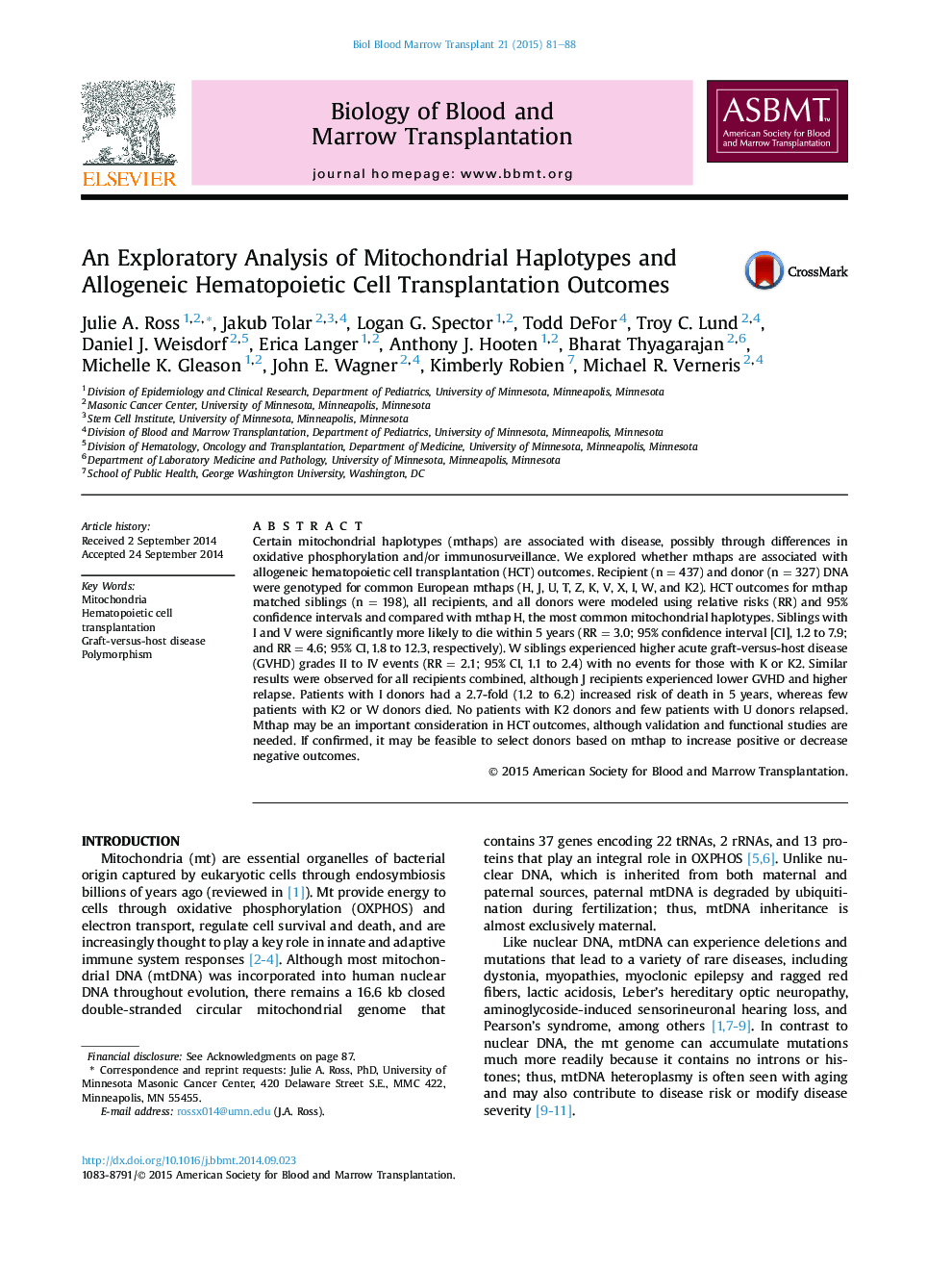| کد مقاله | کد نشریه | سال انتشار | مقاله انگلیسی | نسخه تمام متن |
|---|---|---|---|---|
| 2101865 | 1546272 | 2015 | 8 صفحه PDF | دانلود رایگان |

• There is increasing evidence that mitochondrial DNA polymorphisms (haplotypes, “mthap”) have functional effects on cellular energetics and immune function.
• No study to our knowledge has explored the potential role of mthaps in hematopoietic cell transplantation outcomes.
• We show preliminary evidence that specific mthaps (both recipient and donor) may play an important role in patient outcomes after hematopoietic cell transplantation.
• If our data are confirmed, it may be feasible to additionally select donors on mthap to increase positive hematopoietic cell transplantation outcomes.
Certain mitochondrial haplotypes (mthaps) are associated with disease, possibly through differences in oxidative phosphorylation and/or immunosurveillance. We explored whether mthaps are associated with allogeneic hematopoietic cell transplantation (HCT) outcomes. Recipient (n = 437) and donor (n = 327) DNA were genotyped for common European mthaps (H, J, U, T, Z, K, V, X, I, W, and K2). HCT outcomes for mthap matched siblings (n = 198), all recipients, and all donors were modeled using relative risks (RR) and 95% confidence intervals and compared with mthap H, the most common mitochondrial haplotypes. Siblings with I and V were significantly more likely to die within 5 years (RR = 3.0; 95% confidence interval [CI], 1.2 to 7.9; and RR = 4.6; 95% CI, 1.8 to 12.3, respectively). W siblings experienced higher acute graft-versus-host disease (GVHD) grades II to IV events (RR = 2.1; 95% CI, 1.1 to 2.4) with no events for those with K or K2. Similar results were observed for all recipients combined, although J recipients experienced lower GVHD and higher relapse. Patients with I donors had a 2.7-fold (1.2 to 6.2) increased risk of death in 5 years, whereas few patients with K2 or W donors died. No patients with K2 donors and few patients with U donors relapsed. Mthap may be an important consideration in HCT outcomes, although validation and functional studies are needed. If confirmed, it may be feasible to select donors based on mthap to increase positive or decrease negative outcomes.
Journal: - Volume 21, Issue 1, January 2015, Pages 81–88